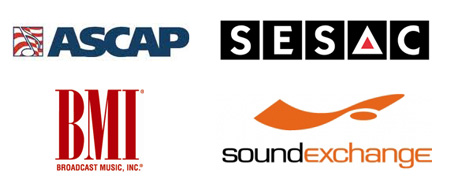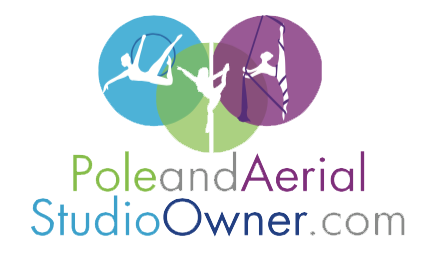Music Licensing & How It Affects Your Pole & Aerial Business
Do pole and aerial studio owners need to pay for a license to use music?

“Do I need to pay ASCAP, BMI or SESAC to use music at my dance studio?” This is a popular question and the short answer is, yes.
It often comes as a surprise to new studio owners that they have to pay license fees to use music. Without music you would most likely not have a pole and aerial business. When you use music in classes and at performances it is referred to as a ‘public performance’. The organizations that were created to protect the rights of the songwriters, composers and music publishers require you to obtain a license so that they can pay royalties to their members. The American Society of Composers, Authors and Publishers states, “We protect the rights of ASCAP members by licensing and distributing royalties for the non-dramatic public performances of their copyrighted works. Our licensees encompass all who want to perform copyrighted music publicly.”
You paid for the song or CD, why do you have to pay a license fee?
The question studio owners often ask after they learn about this is, “why do I have to pay ASCAP, SESAC, or BMI license fees if I already paid for the music on iTunes/Spotify/etc. or purchased the CD?”. This is a common misconception for pole and aerial studio owners because the “right to play a song publicly is not included with a CD or iTunes/music store purchase. The price covers only your personal enjoyment of the music. You must have permission to use a work publicly” according to ASCAP’s copyright document.
Clarifying a public performance according to U.S. copyright law as it pertains to a pole and aerial studio
Often the follow up question includes, “I’m a school and we are offering pole and aerial education, aren’t we exempt from having to pay?”. According to BMI’s frequently asked questions, “No. The exemption in the copyright law only applies to nonprofit educational institutions. Studios that are using music and profiting from the performances must obtain proper licensing of those performances.” and when it comes to studio’s questions about what constitutes a public performance? BMI reminds us, “A “public performance” of music is defined in the U.S. copyright law to include any music played outside a normal circle of friends and family.” This includes pole and aerial dance classes, pole and aerial dance instruction, and performances.
How to obtain your music compliance and other licenses/permits
When it comes to using music in your studio, you’ll want to be sure you are in compliance with any copyright laws so that you don’t have legal issues. This goes for your instructors as well—as the owner, you are responsible for everyone in terms of music use in the studio. Most often, a studio owner finds that these organizations will contact them persistently until the dues and fees are paid and that they are in compliance. Using licensed music is the best way to avoid any problems—you don’t need the legal issues that could arise from using music without permission.
For performances you may want to look into licensing music through an organization such as SESAC, which exists a sort of “clearinghouse” between those who want to license music for a public performance and the artists themselves. Other such organizations include ASCAP and BMI.
You may want to purchase a “blanket license,” which covers you for a range of music. This can be cost-effective if you plan on using a lot of songs. You can also opt to try and contact the copyright owner themselves and obtain permission if you prefer. This can be time-consuming and doesn’t always work, but it might be worth a try if you just have a few songs you would like to use.
The three Performing Rights Organizations (PRO)
According to the Frequently Asked Questions on General Licensing, “SESAC, ASCAP, and BMI are three separate and distinct Performing Rights Organizations (PRO). Each organization represents different copyright holders (songwriters, composers, publishers) and licenses only the copyrighted works of its own respective copyright holders. Licenses with ASCAP and BMI DO NOT grant you authorization to use the copyrighted music of SESAC represented songwriters, composers and publishers. Since a license with ASCAP and/or BMI does not grant authorization to publicly perform songs in the SESAC repertory, most businesses obtain licenses with all three to obtain proper copyright clearance for virtually all of the copyrighted music in the world.” For more information visit: http://www.sesac.com/Licensing/FAQsGeneral.aspx
Visit each site to obtain information on securing your dance studio’s license for music:
http://www.ascap.com/ ASCAP (American Society of Composers, Artists and Publishers)
http://www.bmi.com/ BMI (Broadcast Music Inc)
http://www.sesac.com/ SESAC (Songwriters & Publishers)
Be proactive, avoid persistent calls
We recommend you proactively contact these organizations to get a quote for your fees. If you don’t go to them, chances are they will find you and their approach is not often a welcomed one for studio owners. It will often include persistent calls and attempts to contact you.
When it comes to knowing the fee you will pay, the license is often based on the styles of dance/fitness you teach and the number of students enrolled. When you comply with the law, you can relax and use your music freely. Just be sure you are not duplicating for students and/or selling any music to your student for their use.
Paying these companies for use of music rights is not optional. This is one of the costs of doing business and you can confidently charge your students a registration fee where a portion of those funds can go toward the music license fees.
When you comply with the law, you can relax and use your music freely!


